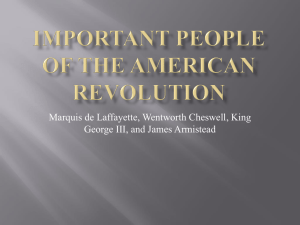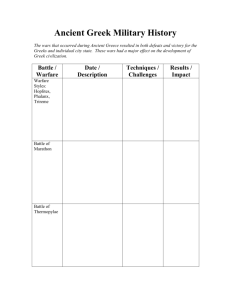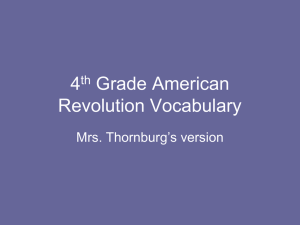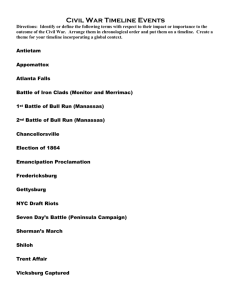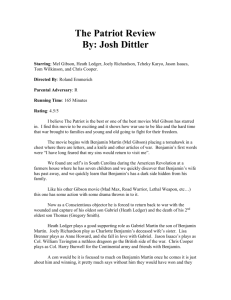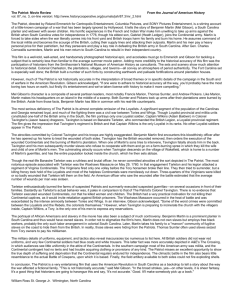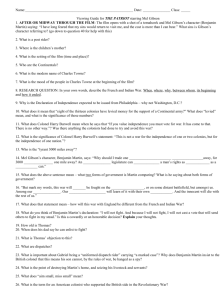The Patriot - Ms. Pennock
advertisement
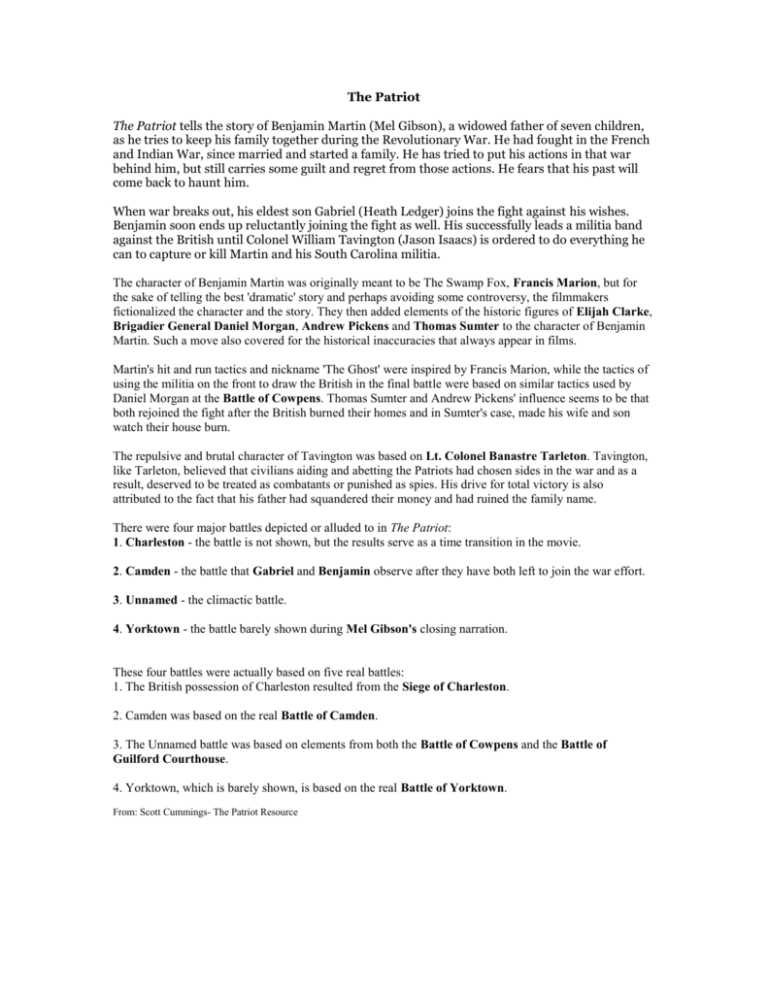
The Patriot The Patriot tells the story of Benjamin Martin (Mel Gibson), a widowed father of seven children, as he tries to keep his family together during the Revolutionary War. He had fought in the French and Indian War, since married and started a family. He has tried to put his actions in that war behind him, but still carries some guilt and regret from those actions. He fears that his past will come back to haunt him. When war breaks out, his eldest son Gabriel (Heath Ledger) joins the fight against his wishes. Benjamin soon ends up reluctantly joining the fight as well. His successfully leads a militia band against the British until Colonel William Tavington (Jason Isaacs) is ordered to do everything he can to capture or kill Martin and his South Carolina militia. The character of Benjamin Martin was originally meant to be The Swamp Fox, Francis Marion, but for the sake of telling the best 'dramatic' story and perhaps avoiding some controversy, the filmmakers fictionalized the character and the story. They then added elements of the historic figures of Elijah Clarke, Brigadier General Daniel Morgan, Andrew Pickens and Thomas Sumter to the character of Benjamin Martin. Such a move also covered for the historical inaccuracies that always appear in films. Martin's hit and run tactics and nickname 'The Ghost' were inspired by Francis Marion, while the tactics of using the militia on the front to draw the British in the final battle were based on similar tactics used by Daniel Morgan at the Battle of Cowpens. Thomas Sumter and Andrew Pickens' influence seems to be that both rejoined the fight after the British burned their homes and in Sumter's case, made his wife and son watch their house burn. The repulsive and brutal character of Tavington was based on Lt. Colonel Banastre Tarleton. Tavington, like Tarleton, believed that civilians aiding and abetting the Patriots had chosen sides in the war and as a result, deserved to be treated as combatants or punished as spies. His drive for total victory is also attributed to the fact that his father had squandered their money and had ruined the family name. There were four major battles depicted or alluded to in The Patriot: 1. Charleston - the battle is not shown, but the results serve as a time transition in the movie. 2. Camden - the battle that Gabriel and Benjamin observe after they have both left to join the war effort. 3. Unnamed - the climactic battle. 4. Yorktown - the battle barely shown during Mel Gibson's closing narration. These four battles were actually based on five real battles: 1. The British possession of Charleston resulted from the Siege of Charleston. 2. Camden was based on the real Battle of Camden. 3. The Unnamed battle was based on elements from both the Battle of Cowpens and the Battle of Guilford Courthouse. 4. Yorktown, which is barely shown, is based on the real Battle of Yorktown. From: Scott Cummings- The Patriot Resource Questions: Answer the following questions on a separate sheet of paper in full sentences. Type your answers. 1. Who is “the Patriot” in the movie? Why? 2. What is a Loyalist? 3. Why does Benjamin Martin feel regret for his actions in the French and Indian War? 4. What is a “Gullah Camp”? Do you think it is realistic to think a plantation owner would be invited to take refuge there? Why/why not? 5. Read the following. Why do you think the movie chose to present the British in the way that it did? From the movie: Colonel Tavington burns down a church with the townspeople inside Colonel William Tavington orders the townspeople of Pembroke into the church. He then demands to know if anyone aids Benjamin Martin and his militia. When one man breaks down and points out Peter Howard as a Patriot supporter, Tavington thanks him and then orders the church locked up with the townspeople inside. Tavington then orders Loyalist Captain Wilkins to burn the church. FICTION: Lt. Colonel Banastre Tarleton (inspiration for Colonel Tavington) never massacred the population of an entire town. FACTS: The only massacre that Lt. Colonel Tarleton was involved in was the controversial Buford's Massacre at Waxhaws, which began as a military engagement and did not involve civilians. Patriots claimed that the Continental force attempted to surrender, but Tarleton and his men rode them down and massacred them. Whether true or not, following Waxhaws Tarleton gained his reputation as giving no quarter or mercy. As far as a church burning massacre, there is no record of one taking place during the Revolutionary War. The most famous case of such an event took place in Oradour, France on June 10, 1944. Nazi SS soldiers herded the town's entire population of women and children into the church and burned the church down. The men were taken to another town building and shot. The SS spent several hours carrying out their destruction of the town. Individual atrocities, such as people being burned alive in their homes, did happen during the Revolutionary War and were carried out by both sides as well as outlaws who used the war as a cover for criminal acts or revenge, but there is no evidence that Lt. Colonel Tarleton ordered the massacre of women and children. BONUS- What is “bundling”? What scene from the movie depicted this? BONUS #2- Where is the only “Fort Wilderness” ever to have existed (a place mentioned in the movie) located?
